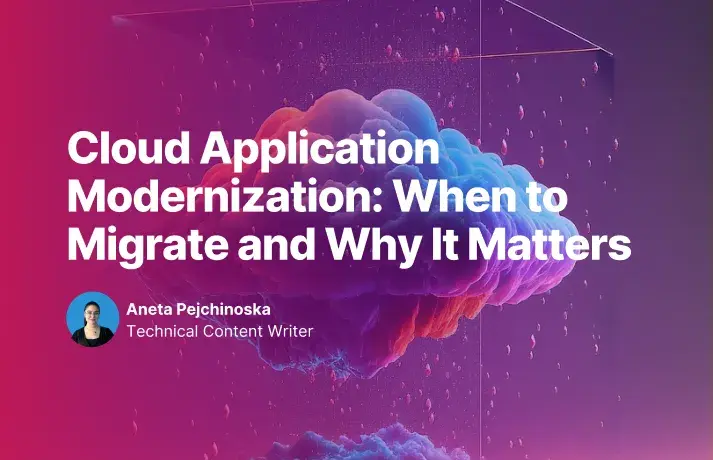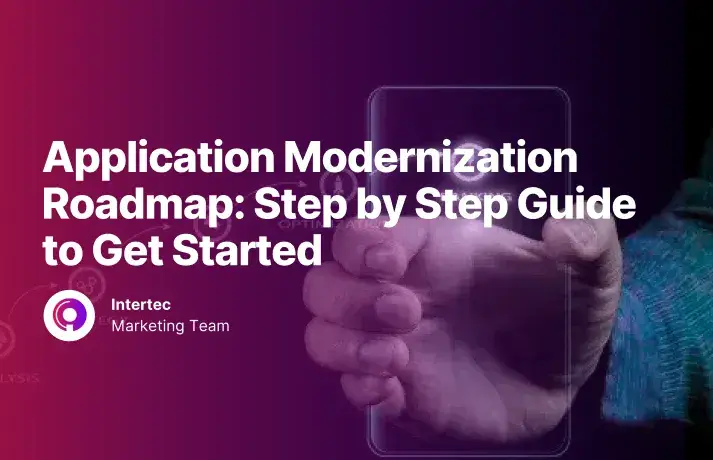How Modernization Happens: The 7 R’s Framework
Before diving into the key application modernization drivers, it’s worth noting that the modernization process isn’t one-size-fits-all. We’ve described it through the “7 R’s” framework - Rehost, Replatform, Refactor, Re-architect, Rebuild, Replace, and Retire.
Each approach represents a different level of transformation, from simply moving an app to the cloud (“lift-and-shift”) to fully redesigning or replacing it. The right mix depends on your modernization strategy, budget, and the strategic drivers we’ll explore next.
Driver 1: Enhancing System Security
One of the most pressing reasons to modernize is to ramp up security. Legacy application modernization often begins with mitigating vulnerabilities that old stacks expose.
A 2022 report showed that 54% of companies cited improving security as a key goal for their modernization projects. In the Red Hat “State of Application Modernization” report, 58% of organizations reported tangible security benefits after modernization efforts.
Legacy systems often lack updated encryption, identity management, or modern applications security standards. By modernizing, we can embed security by design - shifting-left checks, integrating DevSecOps, and adopting zero-trust principles. This alignment reduces technical debt, strengthens compliance, and enables better risk management.
In short: stronger modernized applications mean less exposure, more trust, and lower risk.
Driver 2: Improving Reliability and Stability
Reliability counts. Downtime erodes trust, revenue, and reputation. Application modernization projects often result in greater reliability through modern architectures and better automation.
A government IT modernization case study showed 70% lower downtime after transformation. IBM notes that modern apps reduce maintenance burdens, enabling more stable operations.
Old legacy applications often rely on brittle, tightly coupled modules. A single failure cascades across the entire system. In contrast, cloud services, redundancy, and managed services bring resilience. Monitoring tools, proactive alerts, and automated recovery help organizations reduce risk and keep systems running.
When your platform is reliable, users gain confidence - a key factor in driving business agility.
Driver 3: Boosting Application Performance
Performance directly affects user experiences, internal efficiency, and business outcomes.
The Forrester-commissioned TEI study showed that app modernization via Azure PaaS can yield up to 50% faster feature delivery - improving time to market. Phoenix Strategy notes that modernization efforts improve performance alongside scalability and flexibility.
Think of a slow legacy application. Users click and wait while underutilized infrastructure stalls. By refactoring or re-architecting through cloud migration, caching, asynchronous I/O, and optimized data access, modern applications achieve higher throughput and better concurrency.
Faster systems enhance productivity, automate tasks, and boost overall cost efficiency. Check out our Swiss investment fund case study to see all the benefits the organization saw after we delivered our modern solution.
Driver 4: Achieving Scalability and Flexibility
Scaling is hard in monolithic applications. Modernization unlocks elasticity and adaptability.
Older systems usually scale vertically - adding more power to one server at a time. It’s expensive and limiting. Modern architectures like microservices, hybrid cloud, and containerized applications scale horizontally instead, distributing workloads across multiple servers for flexibility, speed, and resilience. Through cloud applications and software as a service, organizations can adapt capacity to market needs.
This phased approach to modernization also allows cross-functional collaboration. Teams can build new features without disrupting core systems, enabling enhanced agility and sustained innovation.







